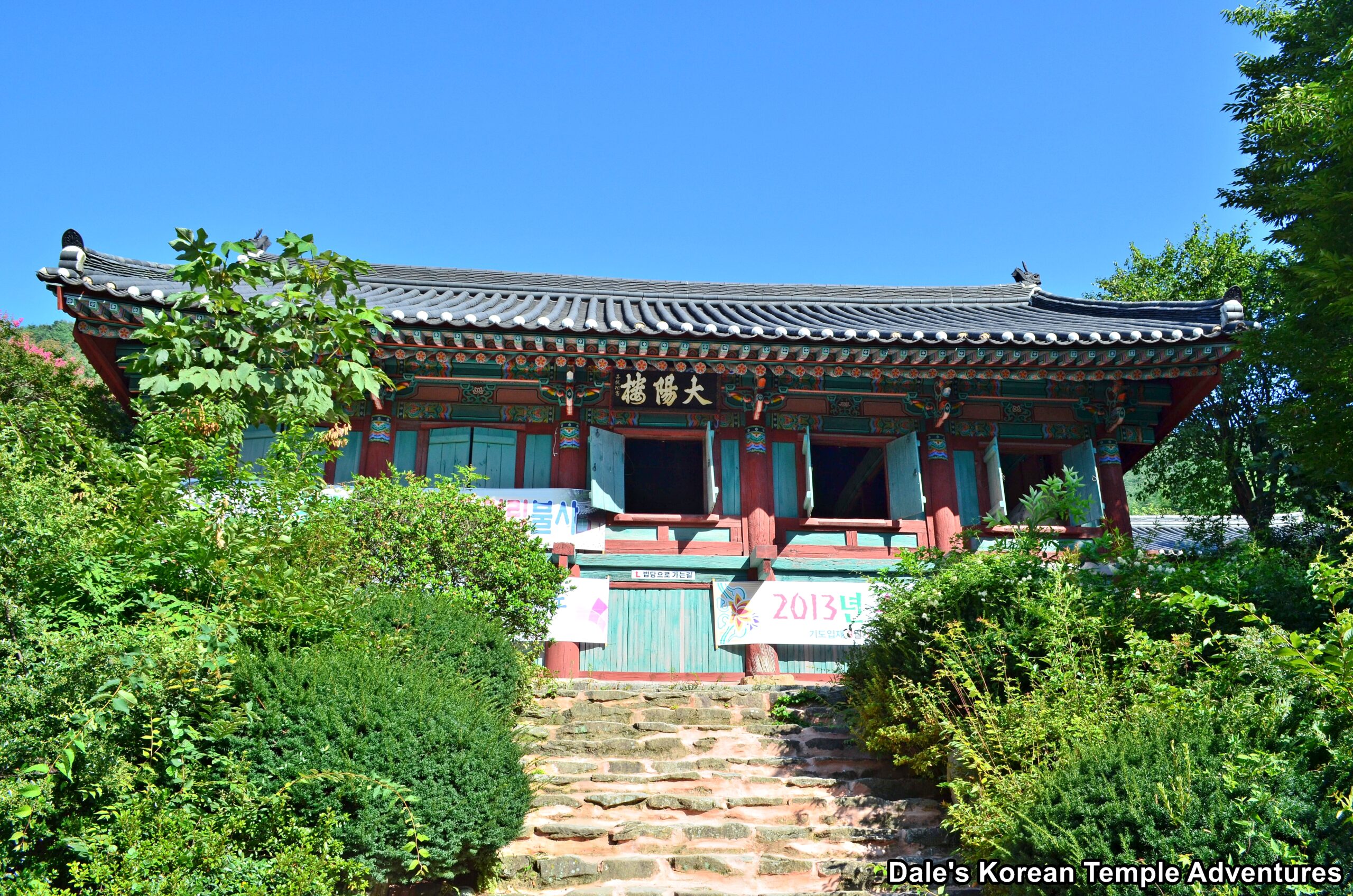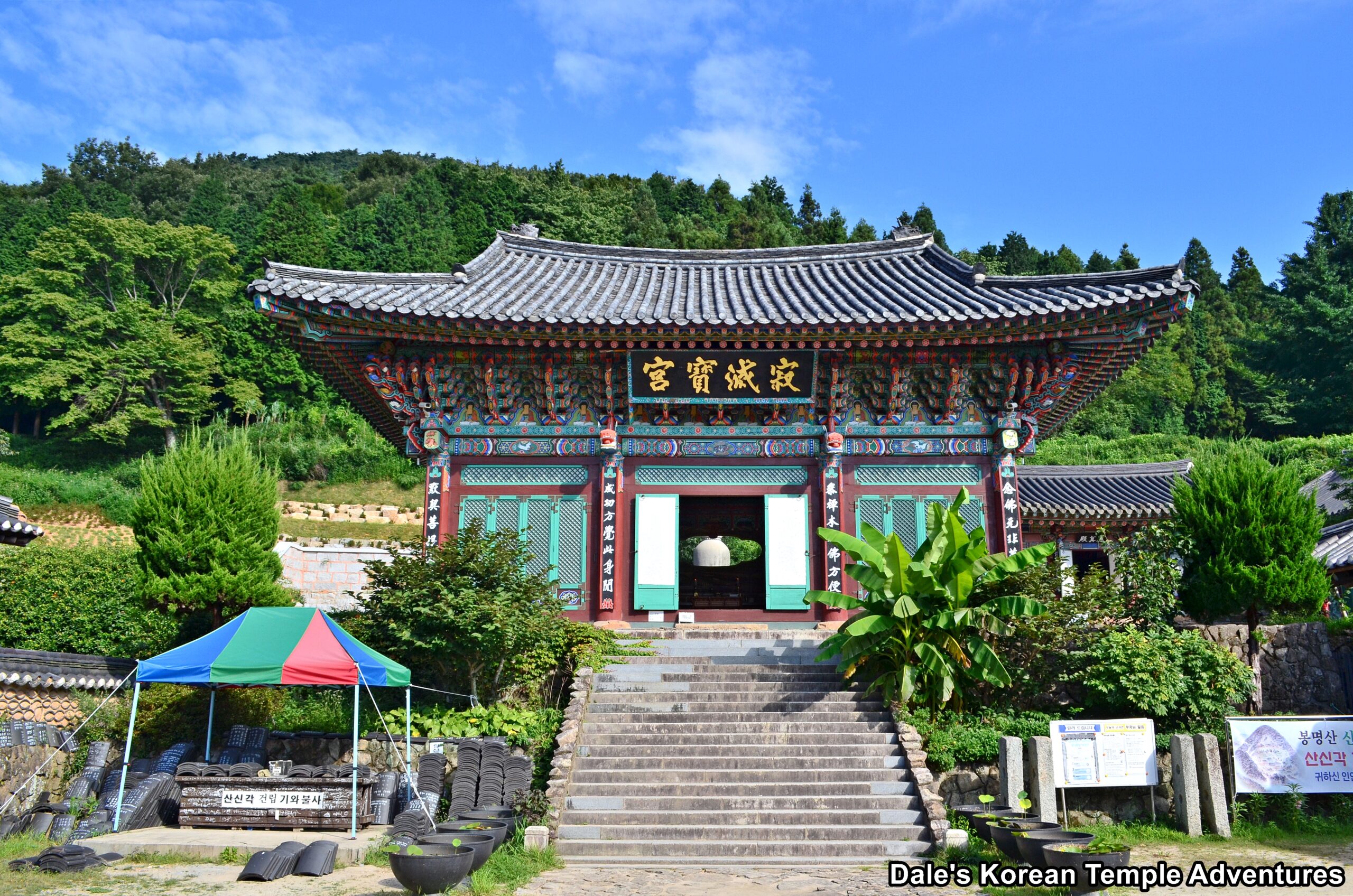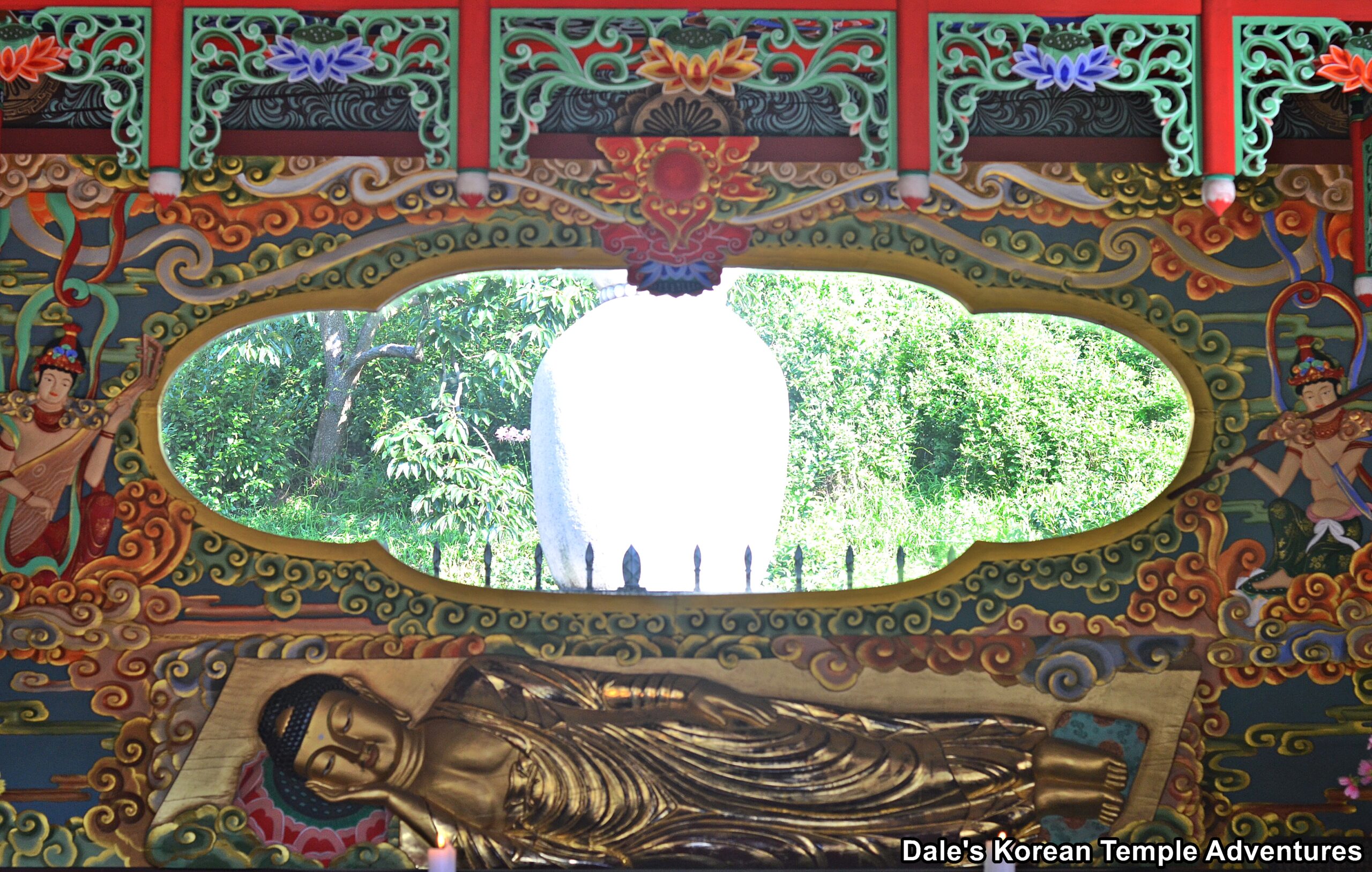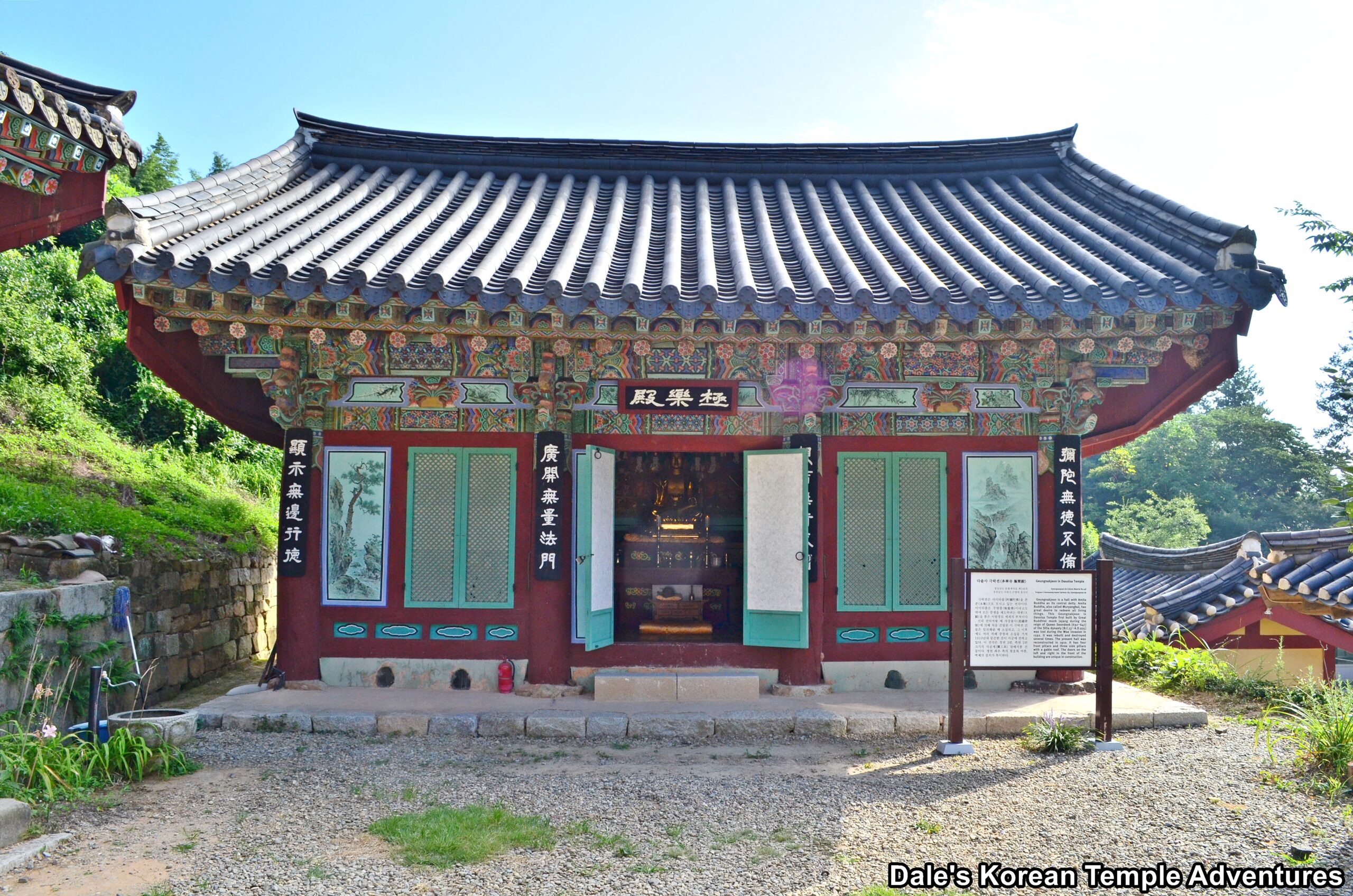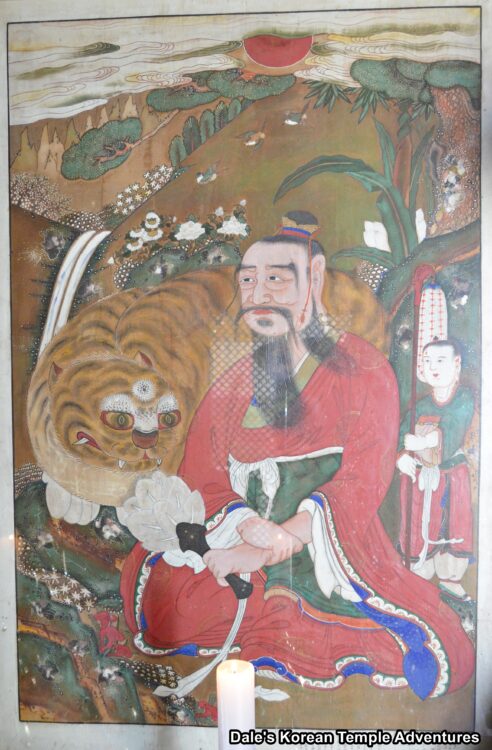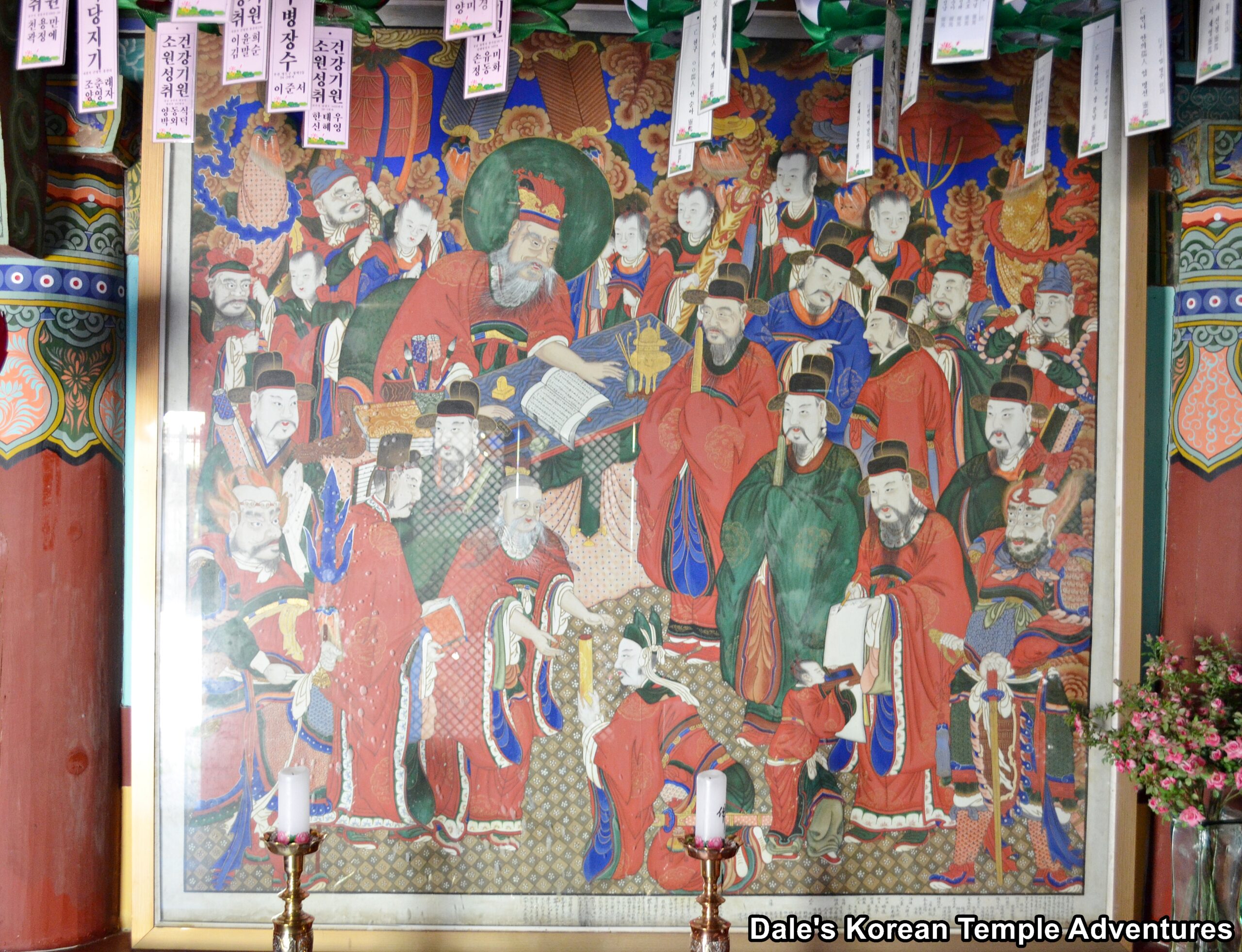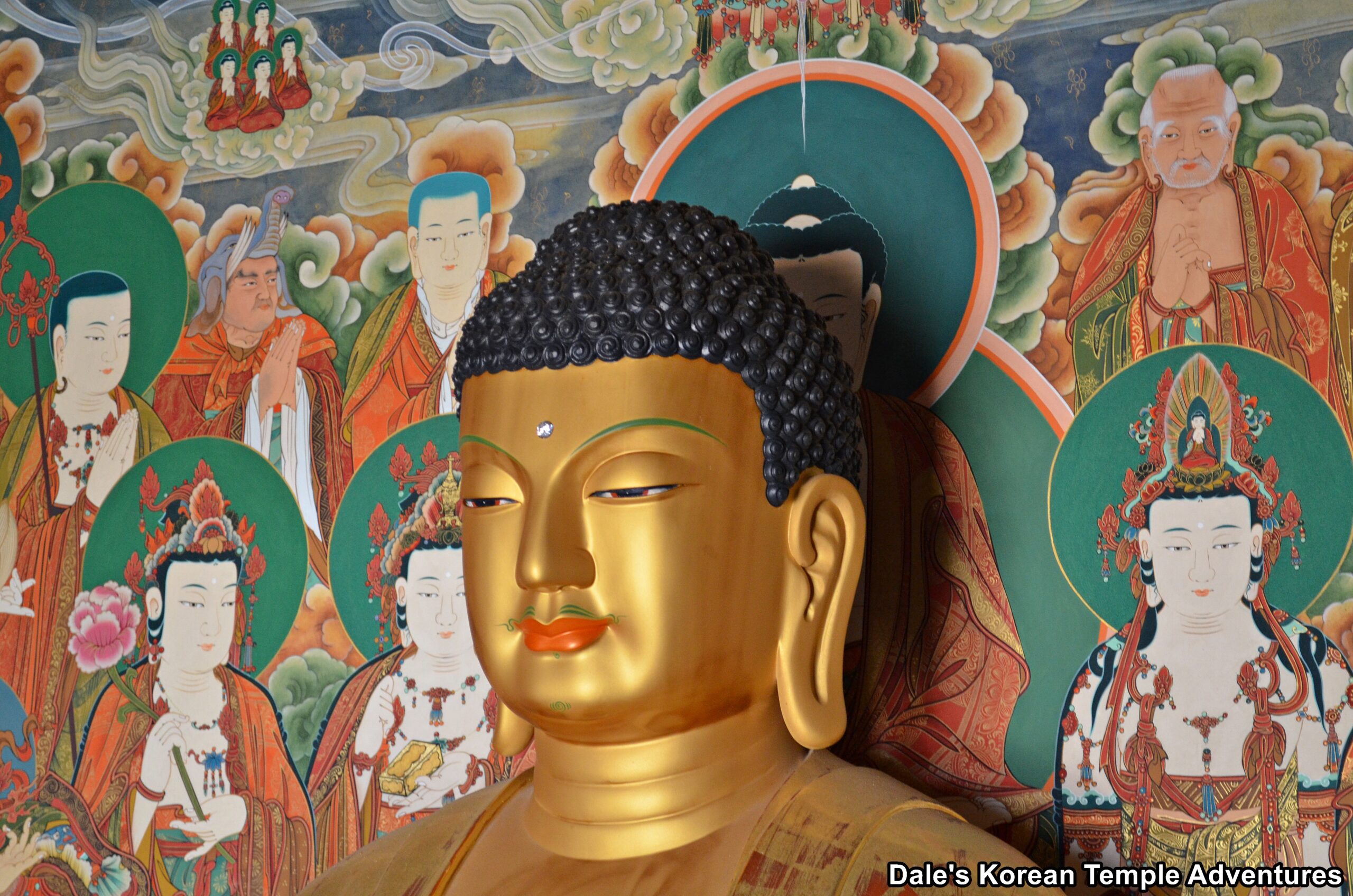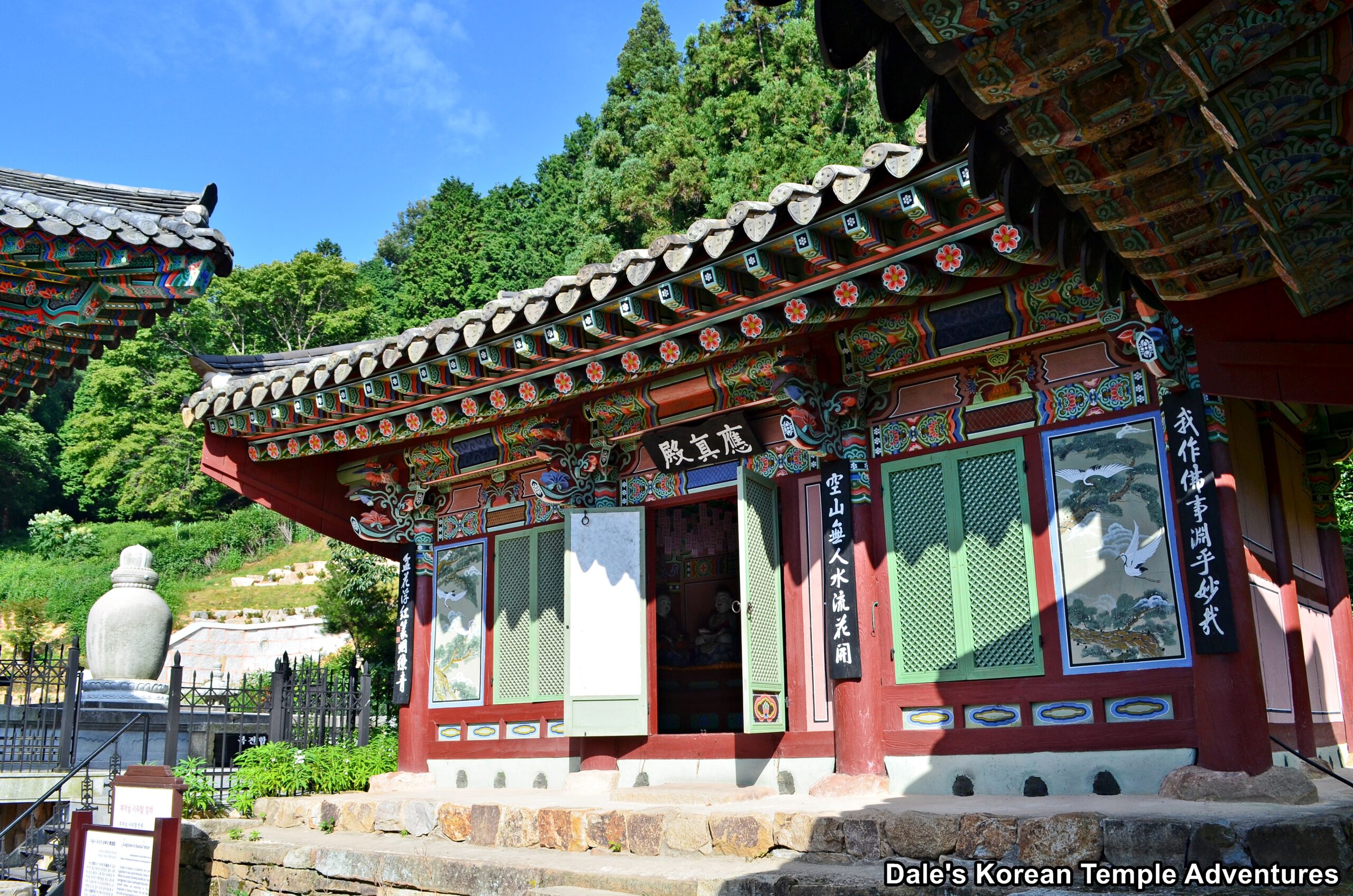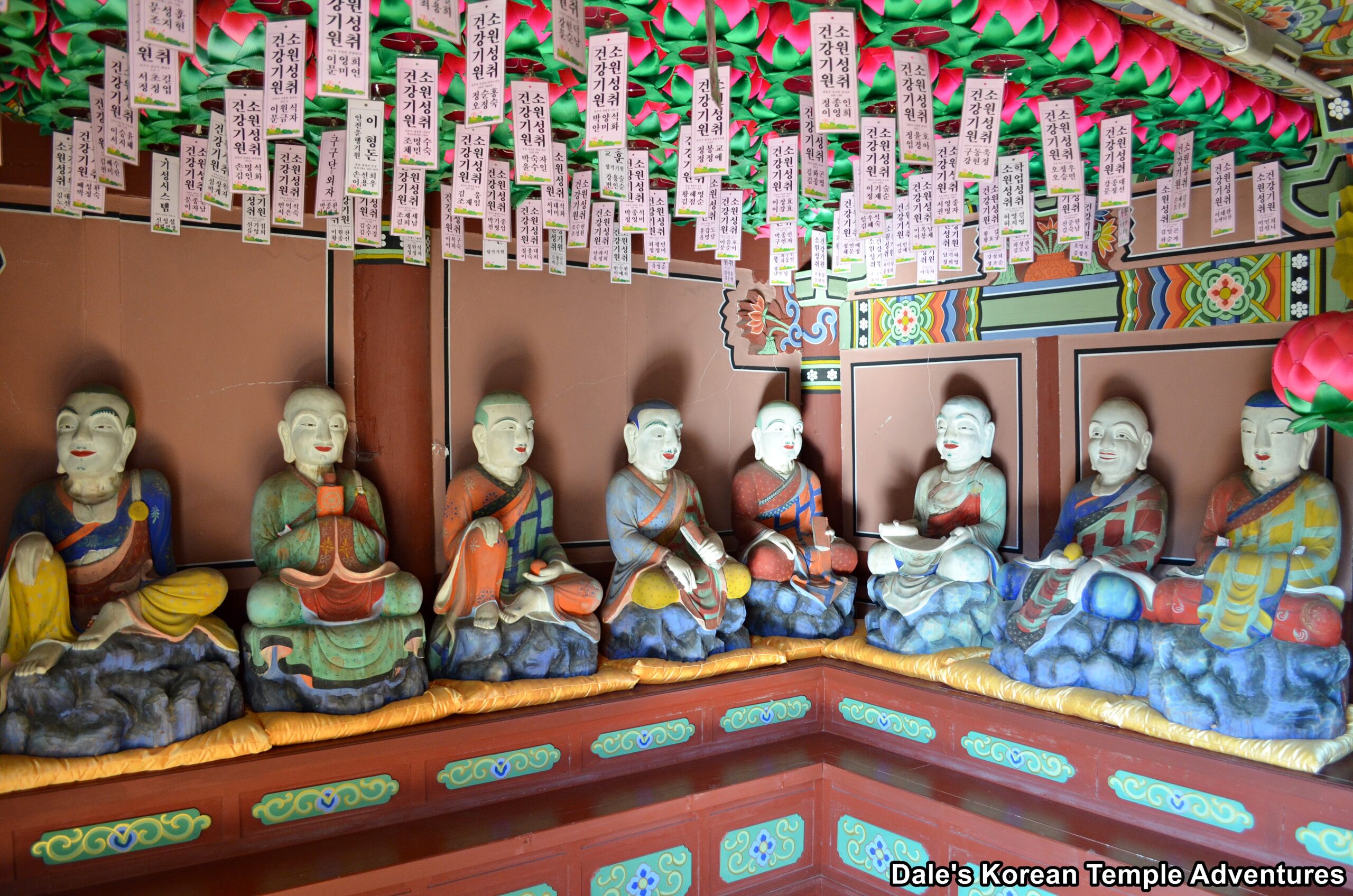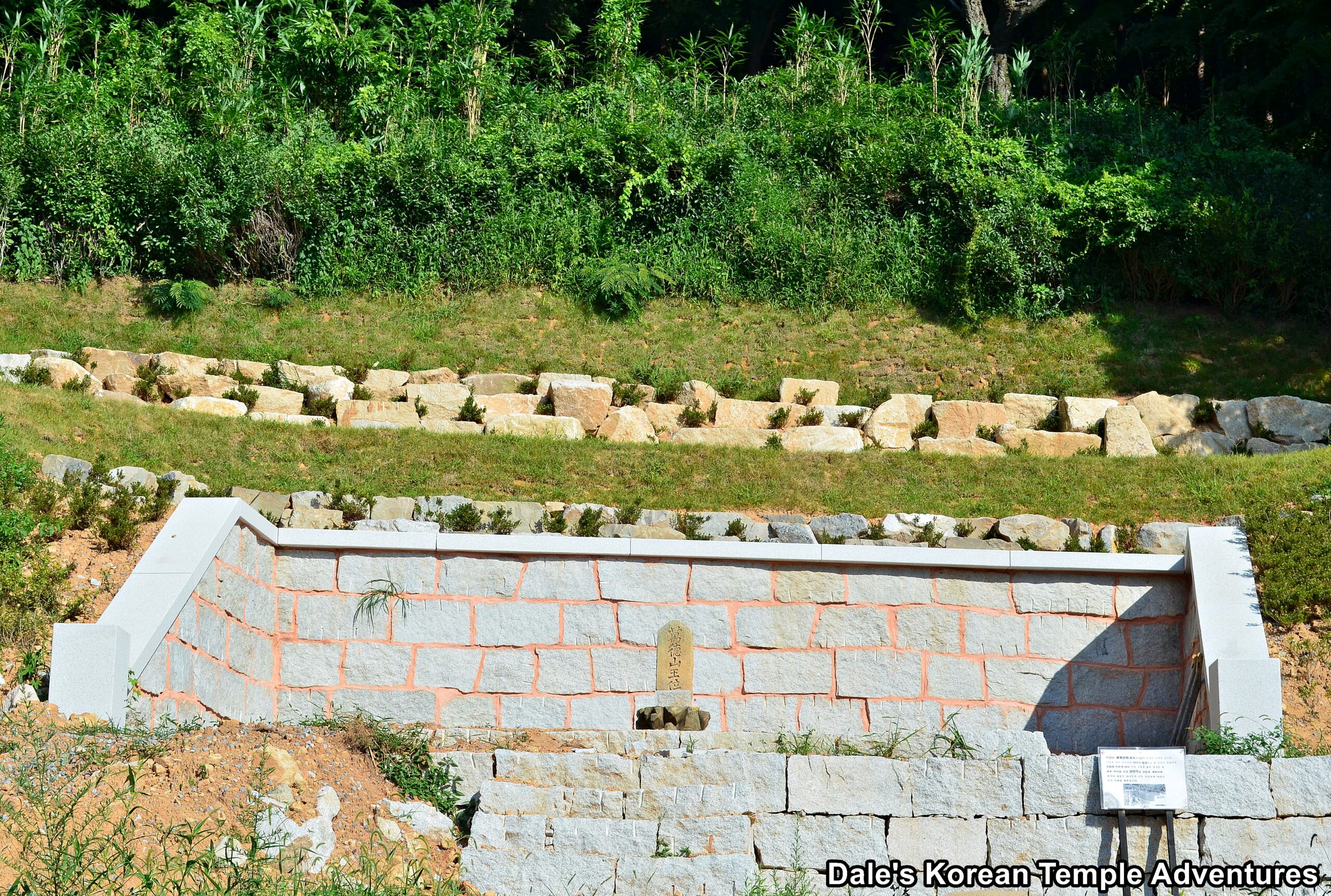Dasolsa Temple – 다솔사 (Sacheon, Gyeongsangnam-do)
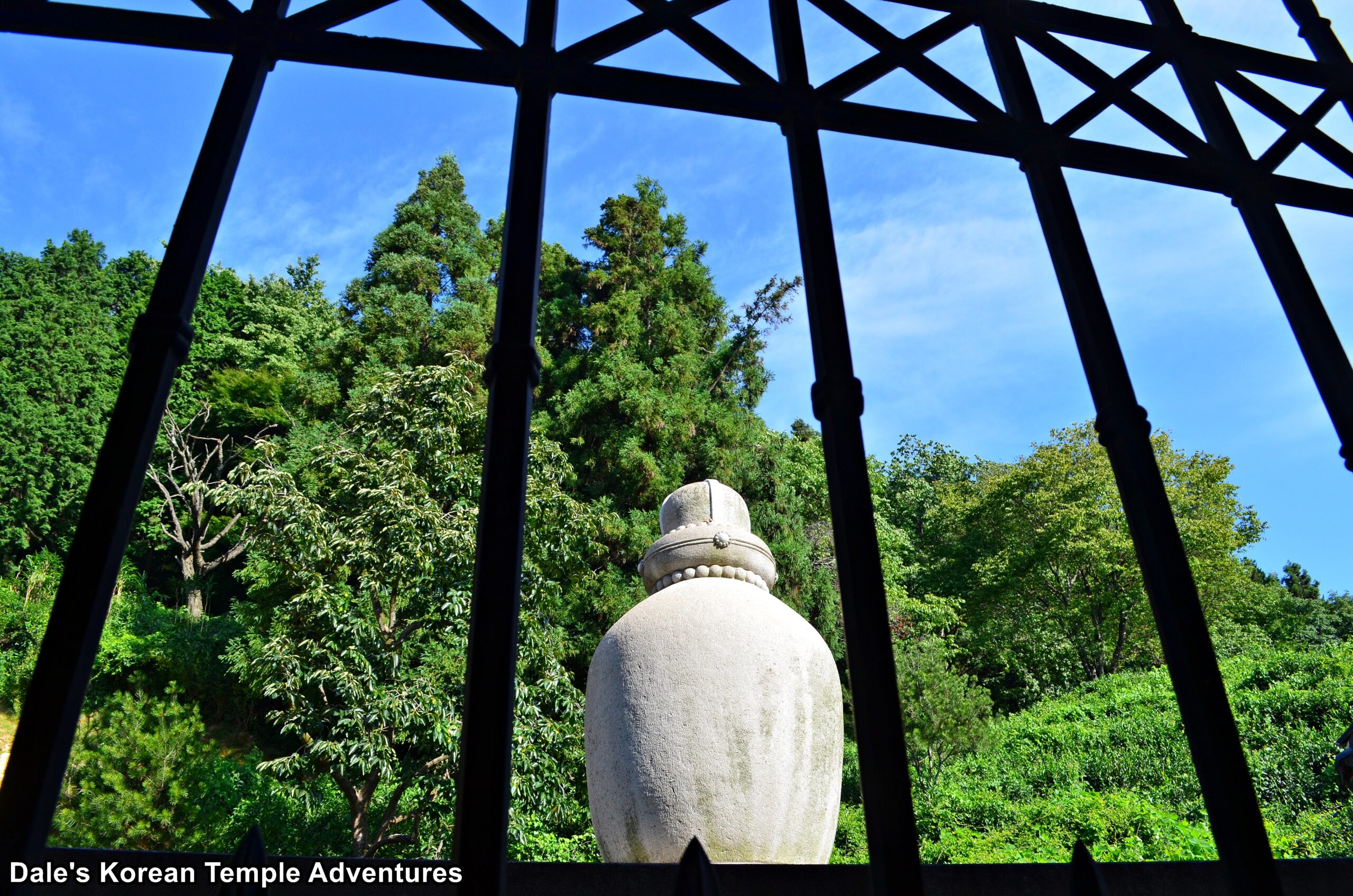
Temple History
Dasolsa Temple is located to the east of Mt. Bongmyeongsan (407.1 m) in Sacheon, Gyeongsangnam-do. Dasolsa Temple was first constructed in 503 A.D. by the Indian monk Yeongi, who also founded Hwaeomsa Temple in 544 A.D. Originally, the temple was called Yeongaksa Temple. The temple would change its name to Dasolsa Temple in 636 A.D. Uisang-daesa (625-702 A.D.) would then change the temple’s name to Yeongbongsa Temple in 676 A.D. Over a hundred years later, the temple would change its name, once more, during the reign of King Gyeongmun of Silla (r. 861-875 A.D.) by the famed monk Doseon-guksa (826-898 A.D.). The temple was repaired in 1326 to only be completely destroyed by the invading Japanese during the Imjin War (1592-1598) in 1592. The temple would eventually be rebuilt in 1680. In total, Dasolsa Temple has been destroyed by fire three times in its long history with the most recent occurring in December, 1914. The only structure not destroyed at this time was the entryway’s Daeyang-ru Pavilion.
On February 8th, 1978, 108 sari (crystallized remains) were found inside the Amita-bul (The Buddha of the Western Paradise) that was located in the Eungjin-jeon Hall at Dasolsa Temple. Afterwards, these sari, which are believed to be those of the Buddha’s, Seokgamoni-bul, were enshrined behind the Daeung-jeon Hall in 1979. Like Hwaeomsa Temple and Yongyeonsa Temple, Dasolsa Temple is considered a Jeokmyeol-bogung (a shrine containing the sari of the Buddha placed there by Jajang-yulsa or others).
In total, it’s believed that such luminaries as the monk Yeongi, Jajang-yulsa (590-658 A.D.), Uisang-daesa, and Doseon-guksa have called the temple home at one point or another. Dasolsa Temple is also home to the Hanging Painting of Dasolsa Temple, which is a National Registered Cultural Heritage.
Temple Layout
When you first arrive at the temple, it’s a bit confusing as to where you should head. It isn’t the best marked. However, the easiest way to get to the temple grounds is to head left towards the temple washroom in the temple parking lot. You can also head right, but this is a roundabout way of getting to the main temple courtyard.
Climbing the first set of stairs that leads up towards the temple courtyard, you’ll be greeted by the Daeyang-ru Pavilion, which was first built in 1748 for religious events. This pavilion is unique because it lacks inner pillars; instead, it’s simply supported by a girder system that’s nothing more than ten metres long. There are some beautiful scenic paintings that adorn the exterior of this pavilion.
To the left of the Daeyang-ru Pavilion, you’ll enter into the main courtyard at Dasolsa Temple. As you enter the main courtyard, you’ll be greeted by the Daeung-jeon Hall. To the right of this main hall are the monks’ dorms and the administrative office. Surrounding the exterior walls of the Daeung-jeon Hall are a set of Palsang-do (The Eight Scenes from the Buddha’s Life). Stepping inside the Daeung-jeon Hall, you’ll instantly be struck by the window that is placed on the main altar and looks out towards a stone lotus bud that houses the sari of Seokgamoni-bul (The Historical Buddha). This is the temple’s Jeokmyeol-bogung. This window is reminiscent of the one at Tongdosa Temple and its Daeung-jeon Hall. The Dasolsa Temple window is beautifully framed by Bicheon (Flying Heavenly Deities) and a golden reclining Buddha who is preparing to enter Nirvana. As for the rest of the interior of the Daeung-jeon Hall, there is a stunning Shinjung Taenghwa (Guardian Mural) to the left of the main altar.
To the immediate right of the Daeung-jeon Hall is the Geukrak-jeon Hall. This temple shrine hall was rebuilt in 1910. Resting on the main altar, and backed by a beautiful mural of the Buddha, is Amita-bul (The Buddha of the Western Paradise). Rather interestingly, the rest of the Geukrak-jeon Hall is filled with images of shaman deities. To the immediate left of the main altar is that of Sanshin (The Mountain Spirit). And next to Sanshin are murals dedicated to Chilseong (The Seven Stars) and Dokseong (The Lonely Saint). And to the right of the main altar is a mural dedicated to the Siwang (The Ten Kings of the Underworld). And next to the Siwang is another mural dedicated to Amita-bul.
To the left of the Geukrak-jeon Hall is the temple’s Eungjin-jeon Hall, which is dedicated to the Nahan (The Historical Disciples of the Buddha). This hall was rebuilt in 1690. And it was rebuilt, once more, in 1930. As you step inside the Eungjin-jeon Hall, you’ll by welcomed by sixteen statues of the Nahan, as well as a main altar image dedicated to Seokgamoni-bul.
Finally, and to the far left rear of the Daeung-jeon Hall, is a stone shrine dedicated to Sanshin (The Mountain Spirit). The stone tablet reads, “Im-yeong-san-wang-seok,” or “a monument for the King of Mt. Imyeong” in English (special thanks to David Mason for this). This stone tablet is surrounded by the tea bushes for which Dasolsa Temple is also famous for.
How To Get There
From the Sacheon Intercity Bus Terminal, it seems like the only way to get to Dasolsa Temple is to take a taxi because there’s no direct bus to get you there. The trip from the bus terminal takes about 33 minutes, or 28 km, and it’ll set you back about 35,000 won (one way).
Overall Rating: 8/10
Dasolsa Temple is one of the very few temples in Korea to claim to be one of the historic Jeokmyeol-bogung temple; and for that reason alone, it rates as highly as it does. In addition, the Daeyang-ru Pavilion is beautiful, as are the shaman murals inside the Geukrak-jeon Hall. The temple has a rare stone tablet dedicated to Sanshin (The Mountain Spirit); and if you have the time, a cup of tea from the temple is definitely worth it, as well.
